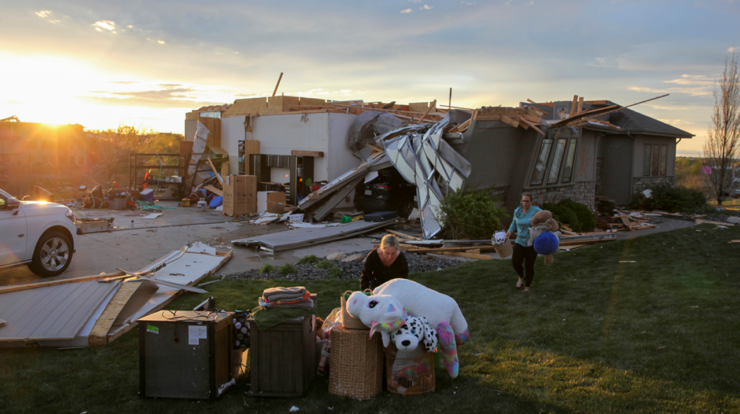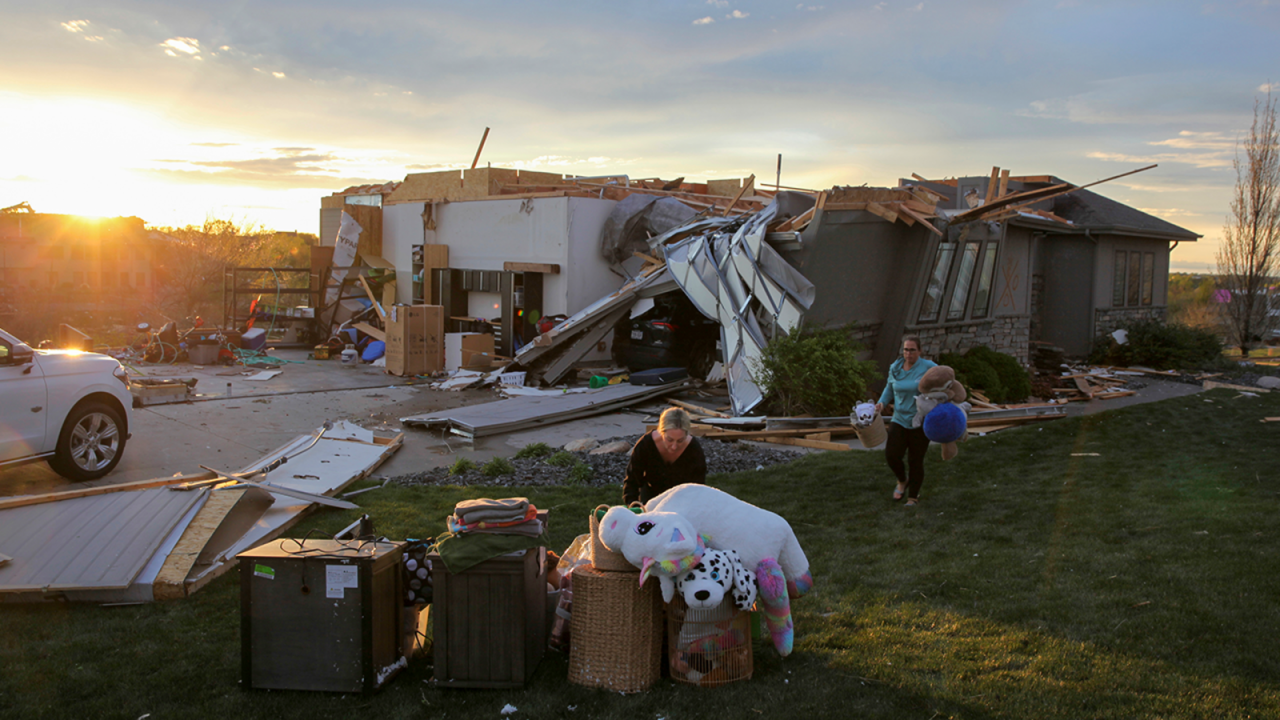
Nebraska Tornado News delves into the heart of one of nature’s most powerful forces, providing a comprehensive exploration of tornadoes in the Cornhusker State. From their historical impact to the latest forecasting techniques, this in-depth analysis offers a captivating journey into the world of tornadoes.
With a focus on safety and preparedness, Nebraska Tornado News equips readers with essential knowledge to navigate the challenges posed by these formidable storms. Discover the secrets of tornado forecasting, explore the effectiveness of different shelters, and learn how to prepare for and recover from a tornado’s devastating impact.
Historical Nebraska Tornadoes: Nebraska Tornado News
Nebraska has a long and destructive history with tornadoes. Some of the most notable tornadoes in Nebraska include:
- Hallam Tornado (1980):An F4 tornado that killed 10 people and injured 150 in Hallam, Nebraska.
- Grand Island Tornado (1982):An F4 tornado that killed 5 people and injured 200 in Grand Island, Nebraska.
- Wilber Tornado (2014):An F4 tornado that killed 2 people and injured 50 in Wilber, Nebraska.
Tornadoes in Nebraska are caused by a combination of factors, including:
- The state’s location in the “Tornado Alley” region of the United States.
- The state’s flat terrain, which allows for strong winds to travel unimpeded.
- The state’s warm, moist climate, which provides the necessary ingredients for thunderstorm development.
Tornadoes have had a significant impact on Nebraska’s history and development. They have destroyed homes and businesses, killed and injured people, and disrupted the state’s economy.
Tornado Safety and Preparedness

There are a number of things you can do to stay safe during a tornado warning in Nebraska:
- Take shelter in a basement or storm cellar.
- If you don’t have a basement or storm cellar, go to the lowest level of your home and find an interior room without windows.
- Lie down flat on the floor and cover your head with your hands.
There are a number of different types of tornado shelters available, including:
- In-ground shelters:These shelters are built underground and are the most effective type of shelter. They can withstand winds up to 250 mph.
- Above-ground shelters:These shelters are built above ground and are less effective than in-ground shelters. They can withstand winds up to 150 mph.
- Portable shelters:These shelters are designed to be moved to a safe location in the event of a tornado warning. They can withstand winds up to 100 mph.
It is important to have a plan in place for what you will do in the event of a tornado warning. You should also make sure that you have a supply of food, water, and other emergency supplies on hand.
Tornado Forecasting and Tracking
Tornadoes are difficult to predict, but there are a number of methods that meteorologists use to forecast and track them.
- Doppler radar:Doppler radar can detect the rotation of the air within a thunderstorm, which can indicate the presence of a tornado.
- Spotter networks:Spotter networks are groups of volunteers who report severe weather conditions to the National Weather Service.
- Satellite imagery:Satellite imagery can be used to identify the development of thunderstorms that have the potential to produce tornadoes.
Once a tornado has been identified, meteorologists will issue a tornado warning for the affected area. Tornado warnings are typically issued 15-30 minutes before the tornado is expected to strike.
There are a number of challenges and limitations to tornado forecasting. One challenge is that tornadoes can develop very quickly, making it difficult to issue a warning in time.
Tornado Climatology and Trends
Tornadoes are a common occurrence in Nebraska. On average, the state experiences about 50 tornadoes per year.
Tornadoes in Nebraska are most common during the spring and summer months. The peak tornado season in Nebraska is from May to June.
The frequency and intensity of tornadoes in Nebraska has been increasing in recent years. This trend is likely due to a number of factors, including:
- Climate change:Climate change is causing the atmosphere to become warmer and more humid, which provides the necessary ingredients for thunderstorm development.
- Land use changes:The conversion of grasslands to agricultural land has increased the amount of heat that is released into the atmosphere, which can also contribute to thunderstorm development.
The increasing frequency and intensity of tornadoes in Nebraska is a serious threat to the state’s residents and economy.
Tornado Damage Assessment and Recovery
After a tornado has struck, it is important to assess the damage and begin the recovery process.
The first step in the damage assessment process is to identify the areas that have been most severely affected.
- Once the most severely affected areas have been identified, teams of assessors will be sent in to assess the damage.
- The assessors will use a variety of methods to assess the damage, including visual inspections, aerial surveys, and satellite imagery.
Once the damage assessment has been completed, the recovery process can begin.
- The recovery process typically involves a number of steps, including:
- Debris removal:The first step in the recovery process is to remove the debris from the affected areas.
- Temporary housing:Once the debris has been removed, temporary housing will need to be provided for the people who have been displaced from their homes.
- Long-term recovery:The long-term recovery process will involve rebuilding homes and businesses, repairing infrastructure, and providing financial assistance to the people who have been affected by the tornado.
The recovery process from a tornado can be long and difficult, but it is important to remember that there is help available.
Tornado Research and Innovation
There is a great deal of ongoing research into tornadoes.
- This research is focused on improving our understanding of tornadoes, developing better forecasting methods, and developing new technologies to protect people from tornadoes.
- Some of the most promising areas of research include:
- The use of artificial intelligence to improve tornado forecasting:Artificial intelligence can be used to analyze large amounts of data to identify patterns and trends that can be used to improve tornado forecasting.
- The development of new tornado detection technologies:New technologies, such as Doppler on Wheels, are being developed to improve our ability to detect tornadoes.
- The development of new tornado shelters:New types of tornado shelters are being developed to provide better protection from tornadoes.
The research into tornadoes is ongoing, and there is hope that this research will lead to new technologies and methods that will help to protect people from tornadoes.
Final Thoughts
As the winds of change continue to shape our understanding of tornadoes, Nebraska Tornado News remains an invaluable resource for staying informed and prepared. Whether you’re a seasoned storm chaser or a resident seeking peace of mind, this comprehensive guide empowers you with the knowledge to face the challenges of tornado season with confidence.
FAQ Summary
What are the most notable tornadoes in Nebraska’s history?
The deadliest tornado in Nebraska’s history occurred in 1955, killing 105 people. Other notable tornadoes include the Hallam tornado of 1980, the Grand Island tornado of 1982, and the Pilger tornado of 2014.
What factors contribute to tornado formation in Nebraska?
Nebraska’s location in the central United States, its flat terrain, and its frequent thunderstorms create an ideal environment for tornado formation.
How can I stay safe during a tornado warning in Nebraska?
Seek shelter in a basement or interior room on the lowest floor of your home. Stay away from windows and exterior walls. If you are outside, lie down in a ditch or other low-lying area and cover your head with your hands.
